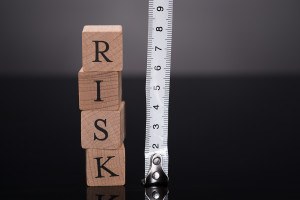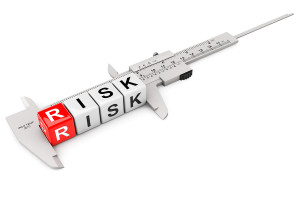Related articles:
- BCAR Revisited: Understanding A.M. Best’s New Model
- Q&A: Don’t React to Rumors on A.M. Best’s New Model, COO Mosher Says
Related Videos:
The rating agency hosted a webinar on Wednesday to provide transparency into its thinking behind a planned move to a “stochastic BCAR,” which in simplest terms means it plans to incorporate computer simulation results into the calculations of risk charge factors that make up the Best’s Capital Adequacy Ratio. Risk charges relate to investment risk, underwriting losses, reserve deficiencies and other potential issues that diminish a carrier’s financial strength.

Analysts stressed that the capital ratio component—and, in fact, the entire assessment of balance sheet strength—is just one part of an insurer rating process that also looks at operating performance, business profile (geographic spread, lines of business distribution) and enterprise risk management. But they acknowledged that concerns about the impact of BCAR changes are out in the marketplace.
“We’ve seen some of the questions come in already in terms of impact and calculations,” said Matthew Mosher, senior vice president for A.M. Best Rating Services.
VaR, value at risk or probability of ruin, is just one point on a probability curve out in the tail. VaR (95) represents the loss value that will be exceeded with a 5 percent probability.
“We have not made final decisions yet. We haven’t made final decisions on the structure of the capital model. We haven’t made final decisions on TVaR and VaR,” he said, referring to two important alternative statistical measures that come out of stochastic models.
“So it’s a little early to say this is what the impact is going to be,” Mosher said.
He continued: “There are people saying we can provide you with what the impact is going to be on your new BCAR model. I would say they can’t.
“They don’t have the answer because we haven’t made those decisions yet,” Mosher said.
Towards the end of the one-hour webinar, Mosher did say that major changes to insurer ratings are not an anticipated outcome of the new BCAR rollout.
“This is a model that is just a tool in developing the ratings,” he said. “We expect that we already are capturing most of the risk that’s out there.”

Matt Mosher, SVP, A.M. Best
“Our current model is providing a fairly good analysis of the risk, [but] there are areas where we feel we can enhance the evaluation. And certainly the technology and the tools that are out there are much better than they were when the original model was built.”
“That’s the focus of what we’re doing but we are not expecting major changes in the overall ratings that are out there,” he said.
In fact, Thomas Mount, a vice president in Best’s Criteria Research and Analytics group, suggested that the rating agency will rejigger its “BCAR guidelines”—essentially the mapping of letter grades to BCAR scores—if the scores change when the move to stochastic model is finalized.
“Our opinion of the industry’s capital level and adequacy should not be materially affected by a change in the model. So if that requires changing in the guidelines, then we may have to do that,” said Mount, who is also a P/C actuary.
Some Higher Charges
In testing stochastic model outputs over the past few months, Best analysts have already observed that some charges in the numerator of the BCAR calculation are increasing—the fixed income and equity securities charges, for example. They also hinted that one possible change, this one to the treatment of potential catastrophe losses, could lower the ratio for some carriers.
 Explaining the higher investment risk observations, George Hansen, a life actuary and an assistant vice president in the Criteria Research group, revealed that one driver of higher bond default risk charges is a more detailed breakdown of bond holdings that will be inputs into the new BCAR model.
Explaining the higher investment risk observations, George Hansen, a life actuary and an assistant vice president in the Criteria Research group, revealed that one driver of higher bond default risk charges is a more detailed breakdown of bond holdings that will be inputs into the new BCAR model.
Under the current model, one charge factor is applied to the total value of Class 1 bonds, even though the bond class is made up of seven different bond rating categories (from A-minus to triple-A) and 30 different maturity durations. Through its Supplemental Rating Questionnaire, the rating agency is now asking insurers to give the distribution of the overall Class 1 bond amount to the different bond rating categories and for different ranges of maturities.
“An A-minus 20-year bond has a much different risk profile than triple-A 20-year bond, Hansen noted. “Similarly, there’s a higher risk profile on that bond then an A-minus five-year bond or a triple-A five-year bond.”
Moving to Class 2, he said, “a triple-BBB 20-year bond will have a much different risk profile than a triple-B-plus five year.”
“By expanding the modeling points, we’re going to be seeing a lot more differentiation in terms of the portfolios,” he said, adding that for life insurers, in particular, there has also been a “rating migration down in the classes” in their holdings. In fact, life insurers had 40 percent of their Class 1 holdings in the two lowest rating categories for the class (A and A-minus) in 2013, he said, noting that Best assumed the percentage was 20 percent in 2006. “Most of that’s coming from a drop in the triple-A holdings,” he said.
Even though P/C insurers are moving to less risky shorter-duration bonds, Hansen reported that the overall results of the modeling that has been done to date—across both the P/C and L/H spaces—indicate that “bond default risk charges are increasing.”
For stocks, preliminary modeling indicates that unaffiliated common stock charges will be a little over 30 percent (based on a 95 T-VaR metric). “This is in line with the current life model which is 30 percent, but is significantly different than what’s in the current P/C model at 15 percent,” Hansen reported.
Turning to P/C underwriting risk factors, Mount noted that for the auto of line of business, a lot of the risk factors (which are computed separately for four company size categories) are unsurprisingly coming out lower than the current model. “Auto has had a good run of profitability over the last 10 years,” and low volatility, he said.
BCAR Basics
The BCAR essentially compares policyholders surplus (with some adjustments) to required capital for various risks, including fixed income security default risk, stock price volatility, the potential for underwriting losses on business written (pricing risk), and the potential for unanticipated adverse loss reserve development (reserve risk).
 Under the current model, the charges aren’t simply added together but combined in a more complicated way to recognize that risks are independent (using the “square root of the sum of the square method”) . In other words, all the negative consequences of running an insurance company—plummeting stock holdings, catastrophe losses, reserve hiccups—won’t necessarily happen together.
Under the current model, the charges aren’t simply added together but combined in a more complicated way to recognize that risks are independent (using the “square root of the sum of the square method”) . In other words, all the negative consequences of running an insurance company—plummeting stock holdings, catastrophe losses, reserve hiccups—won’t necessarily happen together.
More precisely, the rating agency says in a published methodology paper on its website, which explains the current BCAR calculation: “This covariance adjustment essentially says that it is unlikely for all seven risk components to develop simultaneously and serves to reduce a company’s overall required capital by about 35-45 percent” from the result that would be obtained from simple addition.
As A.M. Best moves to a stochastic BCAR, the same method for combining the risks will likely be used during the first Phase 1 of the rollout, analysts said during the webinar. During Phase 2, the prospect of replacing the calculation with a “correlation matrix” will be considered. (Such matrices are planned for the initial rollout when it comes to considering correlations between lines of business for calculations of pricing and reserve risks, but not between risk categories yet.)
Stochastic BCAR
For each of the various risks considered in the “required capital” part (denominator) of the BCAR, moving to a stochastic approach means that Best will use computer simulations—thousands of them—to generate risk charges.
“There is more sophisticated and faster software available now,” said Mount, providing one reason for the BCAR model change. “That will allow us to put in some probability curves and do thousands of simulations off those probability curves,” said Mount, referring to statistical functions associating values of a random outcome with indications of the outcome probabilities.
“We can use some canned economic scenario generators to produce thousands of simulations of future paths of where economy can go” in calculating investment risk factors, for example, he said.
“We can also look at some of the metrics that are understood and utilized by the industry,” he said, providing another reason for the move to a stochastic model. He noted that one of metrics that insurers are looking at more frequently in their own capital models is T-VaR, or tail value at risk.
T-VaR, Mount explained, is an average of all losses beyond a given threshold, where the threshold is usually expressed as a percentile. (Editor’s Note: T-VaR (95), for example, captures all events occurring with a 5 percent probability or less.)
Another metric understood by the industry is VaR, or value at risk, indicating the probability of default or ruin, he said. VaR is just one point on the curve out in the tail. (Editor’s Note: VaR (95) represents the loss value that will be exceeded with a 5 percent probability.)
Mount walked webinar viewers through the simulation process that will take place for each of six risk charge calculations set to be updated during Phase 1 of the model change—bond risk default, stock volatility, reinsurance recoverables, P/C underwriting risk, P/C reserve risk and catastrophe risk.
“The goal is to generate risk factors using stochastic simulations from probability curves,” he said.
In fact, simulations will be run for separate categories of investment for the asset risks and for different lines of business for underwriting and reserve risks to reflect nuances of individual company portfolios.
Explaining the process for bond default risk, for example, Mount said A.M. Best will start with an economic scenario generator, producing thousands of simulations of possible bond defaults. “We would like to reflect in better detail the company’s bond portfolio—the rating quality and then when they’re maturing,” he said. “A portfolio with longer duration and lower quality should have a higher default risk than a portfolio that has a shorter duration and higher quality bonds,” he said.
Mount’s explanation of the P/C underwriting risk charge calculation was more involved. Here, he said, Best has created four industry baseline curves based for each of 21 (Schedule P) lines of business based on volume of premium (very small, small, medium and large).
Using the baseline probability curve as a starting point, A.M. Best will adjust that based on company’s profitability. “A company that is profitable, has a greater profit margin built into their pricing and can accept more downside loss, should be charged a lower required capital amount,” he explained.
“We would then simulate 10,000 possible underwriting profit-and-loss scenarios for each line of business based on that adjusted curve for that company. Once we have all those potential scenarios for each of the lines of business, we can then give a diversification benefit,” he said, noting that the diversification credit will also vary by size of company.
The actual risk charges could be based on T-VaR or VaR, he said, going on to review a similar process for P/C reserve charges and other risks that Best will tackle in Phase 1. As is the case for underwriting risks, for reserve risks, the 84 curves used for simulations will be adjusted to reflect the volatility of loss developments for individual insurers—stretched wider for more volatile ones and squeezed for more stable ones.
During Phase 2, which is at least a year away, Best will work on remaining asset classes, life and annuity risks, and the diversification benefit given across the risk categories (potentially replacing the current square rule).
During Phase 1, Best will also take a fresh look at the natural catastrophe load that’s used in the BCAR model. Currently potential catastrophe losses are subtracted from policyholders surplus (numerator) in the BCAR calculation, but in the stochastic BCAR update, the rating agency may instead add the potential losses to required capital (in the denominator). During the webinar, Mount went through an example for which this change lowered the BCAR ratio.
Choosing a Metric
As Best’s reexamines the treatment of catastrophe risk, other questions to be answered include whether to use occurrence curves or aggregate season curves, and whether to focus on all perils together or individual lines, he said.
And then there’s the question which needs to be answered for all the risk charges—whether to use T-VaR or VaR—a question that seems to be a real sticking point for the analysts right now.
“We’re trying to be consistent across all risk categories, [but] that’s not set in stone,” Mount said.
Mosher said that as Best analysts have stepped back and started to look at initial test results, discussing them with industry parties and internally, the impact of using T-VaR has given the analysts some pause. T-VaR captures a lot of volatility in the tail of the curves, particularly for catastrophe exposure, and that as started the analysts down the path of asking, “Is that too much?”
“We’ve done a lot of work—all the work we’ve done so far has been on a T-VaR basis and [it] has provided a lot of information. Going forward over the next month, we’re going to be looking at output using the VaR approach…to get a feel for what level of noise comes out of that,” he said.
What’s Next?
Concluding his remarks, Mosher said: “Don’t get too far ahead of yourselves. Look at the issues that you might have related to the risks that you have, and the [possible] changes in the risk metrics but don’t expect to come up with this is what the impact is going to be on our capital model,” he said. (Already, at the end of the webinar, a viewer worried about the consequences of the T-VaR metric asked whether his company should buy more catastrophe reinsurance.)
Mosher expects that within a month or so, Best will come back with more concrete details about the actual proposed BCAR framework. “We’re just not at that stage yet. We’re still working through some of the testing—particularly with the TVaR vs VaR metrics.
He said next steps include continuing to engage in discussions with key industry constituents, noting that many have taken place already even relative to VaR vs. T-VaR. Then “over the next few months, we expect to start working on the draft criteria as we finalize some of the framework pieces,” he said.
“We have built out and tested the initial parameters T-VaR and 2013 data. That’s where some of the issues have come up [and] have resulted in us taking a second look at things, he said.
“We plan to run a parallel BCAR on all companies using 2014 data,” he said, noting that when Best ultimately releases draft criteria, the rating agency will share with companies both the criteria and their individual output from this data. The plan is to roll out the draft criteria this summer, allowing for carriers to share comments with their analysts, who will discuss them criteria team members developing the model.
“The time frame for when we roll out the final BCAR will be very much contingent on the level of comments, the issues that are raised in the comments, [and] the materiality,” he said.
After investment risk, P/C underwriting and reserve risk criteria are rolled out in Phase 1, Phase 2 will be about a year behind, Mosher said.





















 Unpacking a Consumer Intervenor’s Novel Idea
Unpacking a Consumer Intervenor’s Novel Idea  The Latest Launches from Allstate, WTW, Whisker Labs
The Latest Launches from Allstate, WTW, Whisker Labs  Bankers Readying U.S. IPOs at ‘Overwhelming’ Pace Ahead of 2026
Bankers Readying U.S. IPOs at ‘Overwhelming’ Pace Ahead of 2026  Why Insurance Telematics Integrations Fail
Why Insurance Telematics Integrations Fail 




